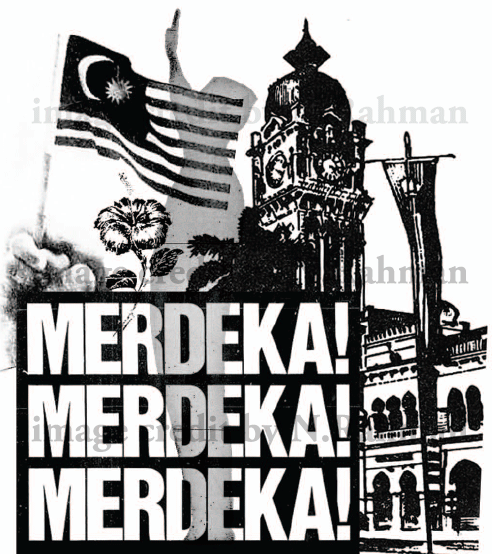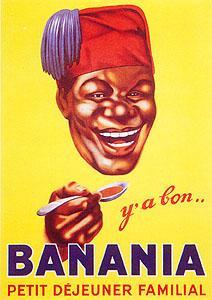In one of my PhD chapters (2011), I discussed about the construction of Malaysian identity through establishment of national history and argue by examining and showing how it is constructed. To think about the idea of national history is not far from thinking of selection of what can be considered as national and what is not. Now, if history means the study of the past (Oxford Dictionary 2010), then to established the notion of national history should mean the study of the past that linked to the nation and the state. We all knows, I hope, that to includes all history of the nation, the people, their culture, believes, achievements, tragedy and so on, is an open ended. So the questions here is firstly, how does the selection of choosing the ingredient of the Malaysian national history occurred? Secondly, how does it been perpetuated as the national history, and thirdly, nonetheless, is the most important question, what purpose does national history served?

Image construction by NurulRahman-Oct-2010.
For a new country such as Malaysia, this is the current impact of the establishment of the term national history. In public schools and higher education, the national history is the most emphasized subject of history. Students are asked to memorized the date of the significant events without being involved in critical discussion of the events occurred to provide clear understanding of the historical incident. Due to that, most of the history classes became monotonous and uninteresting. Most of the students were required to remember the important dates and events because it will be asked in the exam. History has never been interesting for me at school. Until I have learned the other side of the history, or the invisible gaps in Malaysian history, through different readings, mix and match from several different artifacts. Interestingly when I discussed about my discoveries to some of my fellow Malaysian friends, they said to me that most of the books or literature that I have read is regarded as the attempt of the western action to destroy the sense of unity and harmonious living in Malaysia. They also advised me instead to look at publication of Malaysian history written by local historian and refer only to the literature that were published in Malaysia. As they said, it will provide the most accurate history of Malaysia. Shocked, yes, thinking how can one believe only on one side of the stories (in this case a country’s history) without researching, comparing the materials and gaining knowledge from others? Can the notion of national history be that linear? Then our discussion goes on by my fellow Malaysian friends by showing examples of the movies that they believed linked to the national history, such as Bukit Kepong, Leftenan Adnan, Abang, and even linked to the legendary Malay icon, Hang Tuah. The mixed of history, national history, folk and legendary stories is part of Malaysian history. I am not surprise if Hang Tuan and his fellow friends is part of the discussion in history classes in Malaysia. Besides legendary Hang Tuah is already part of the exhibits artifacts of Malay Kingdom in Malacca National History. How can I contest the artifact that were exhibited in National history as not part of the country’s history?
This curiosity of trying to understanding my own Malaysian history, and origins of national identity became my past 5 years PhD research topic. I stand here as I am at the end of writing my PhD’s conclusion, that the notion of Malaysian identity that once I believed in and still many of my fellow Malaysian believed in is no more than an imagining ideals of Malaysian identity.
Today in a Malaysiakini online newspaper, this topic have pop up, and I hope that many Malaysian will began to take notes. The curiosity that I have felt alone is shared by the author, Raja Petra. In this article, Raja Petra wrote that Malaysia ex-prime minister, Tun Dr. Mahathir Mohamad states that ‘Malaysian history as currently taught in schools was inaccurate’ (Malaysiakini.com, 11 September 2011). At least that hypothesis that I was trying to prove in my PhD is supported by Malaysia ex-prime minister. In Tun Mahathir own words he stated, ‘Many from the younger generation do not understand history and the origin of the nation, as there were attempts to alter historical facts into fantasy,’ quoted as saying in a Bernama Online report 11 September 2011. The National Professors’ Council (MPN) also has taken debate further in claiming that Malaya was never colonised by British Empire. Thus, Higher Education Minister, Datuk Seri Mohd Khaled Nordin began to comment that the current history syllabus in schools needs to be reviewed.
It is also known that Malaysia Prime Minister’s wife, Rosmah Mansor, and the Deputy Prime Minister, Muhyiddin Yassin, are currently in London where it is believed they met the British government to discuss amendments to the British distortion of history. It is claimed that there are some errors in the documents kept in National Archives that gives the wrong impression about Malaysia. As stated by Petra in online newspaper Malaysiakini.com articles, ‘The documents in the National Archives in London talk about the British Colonial government of Malaya and refer to the Colonial Office. This gives the wrong impression that Malaya was a colony of Britain whereas this was not so, says Malaysia. Malaya was never colonised by Britain, argues Malaysia’ (11 September 2011).
If the national history that was taught, proud and claimed for years as part of the nation history celebrating the independent day Merdeka on the 31 August 1957, is now stands as incorrect and doubtful, will there be a truth in the history of Malaysia?
This blog content is part of a working paper by the author. Any republication of the text, ideas or statement in any form should be in an agreement of the author – Nurul Rahman 2011. (contact nurulrahman [at] gmail . com]



